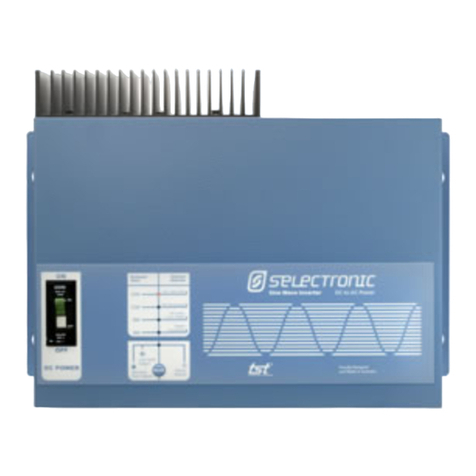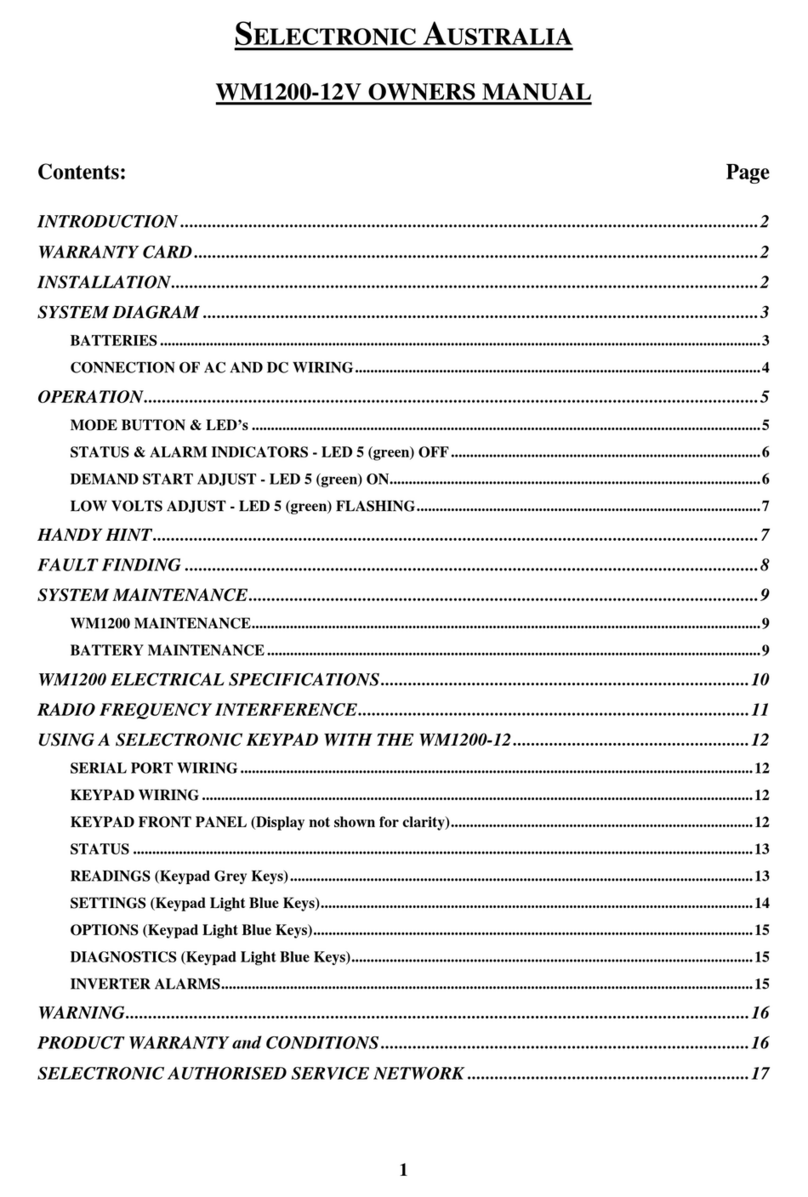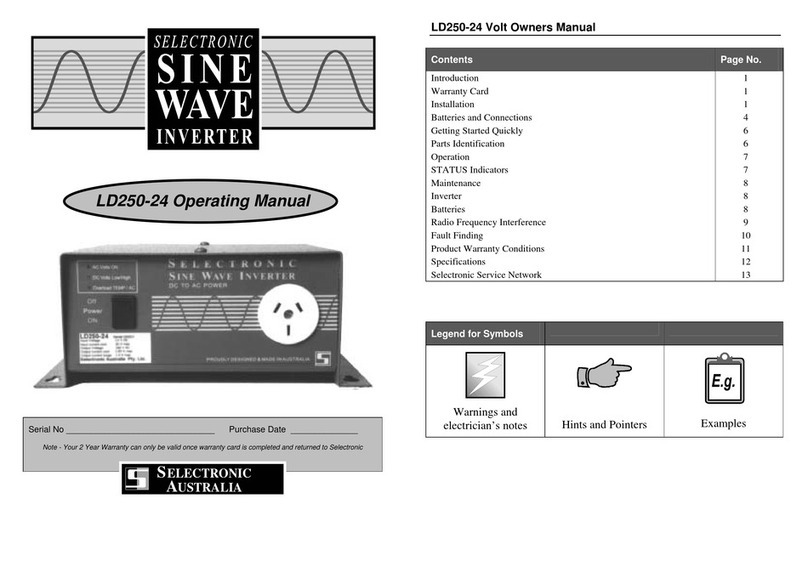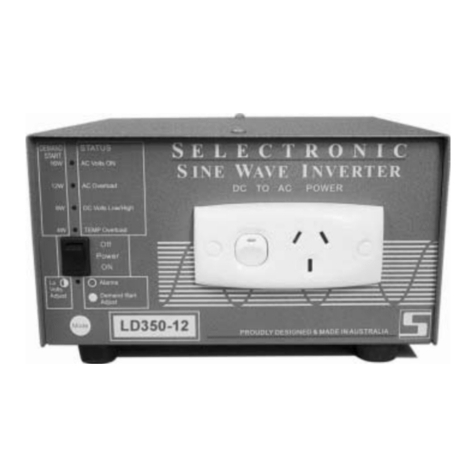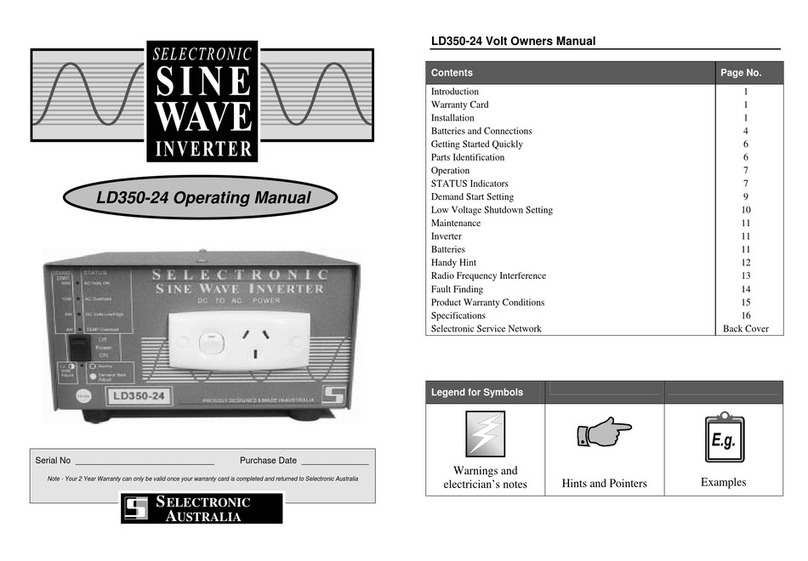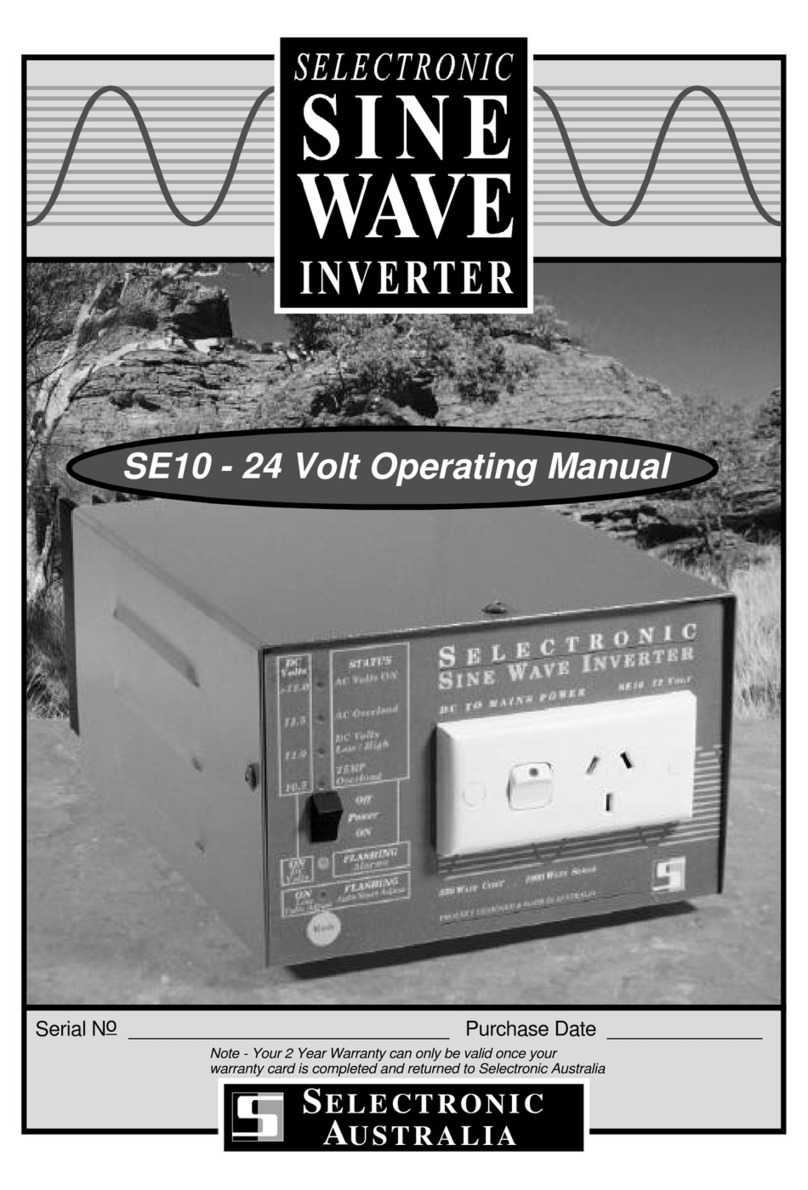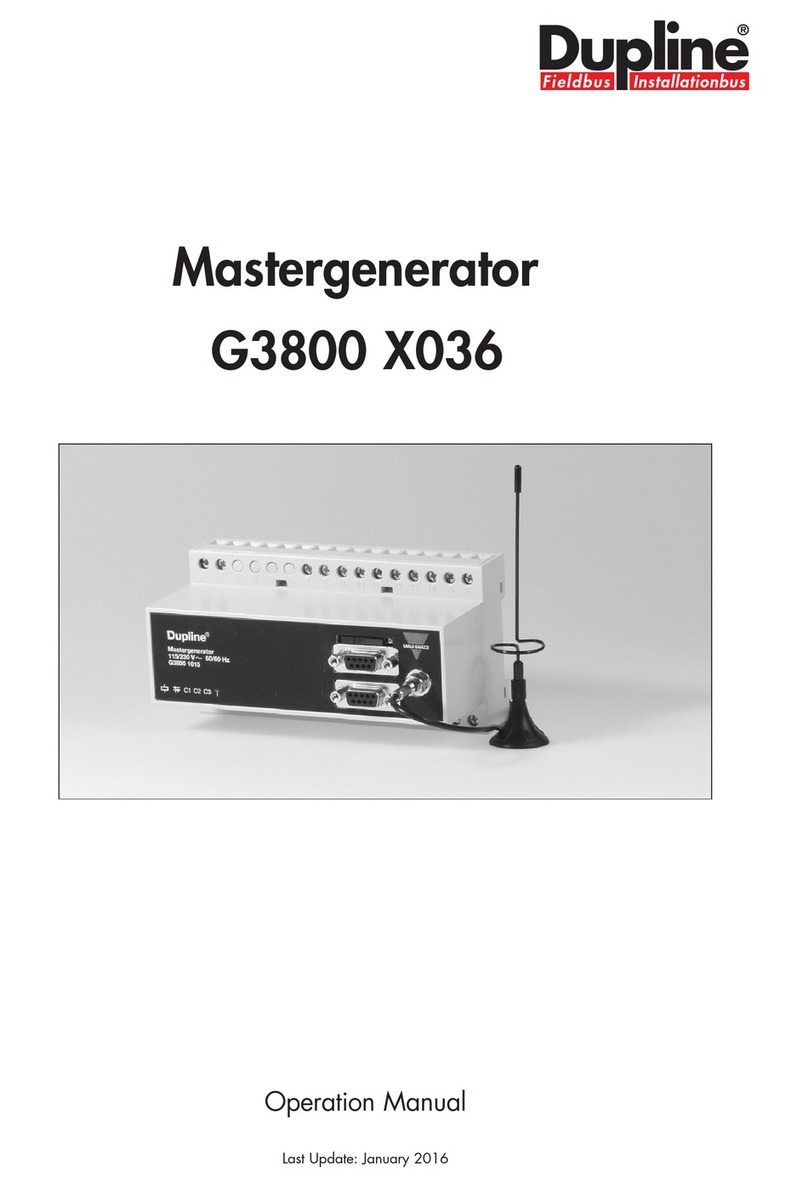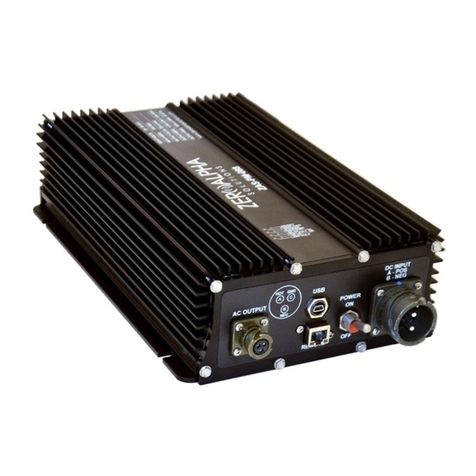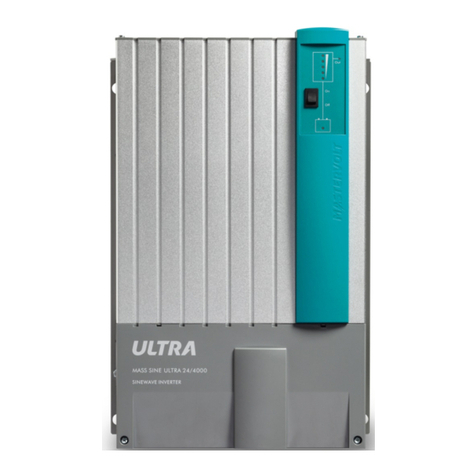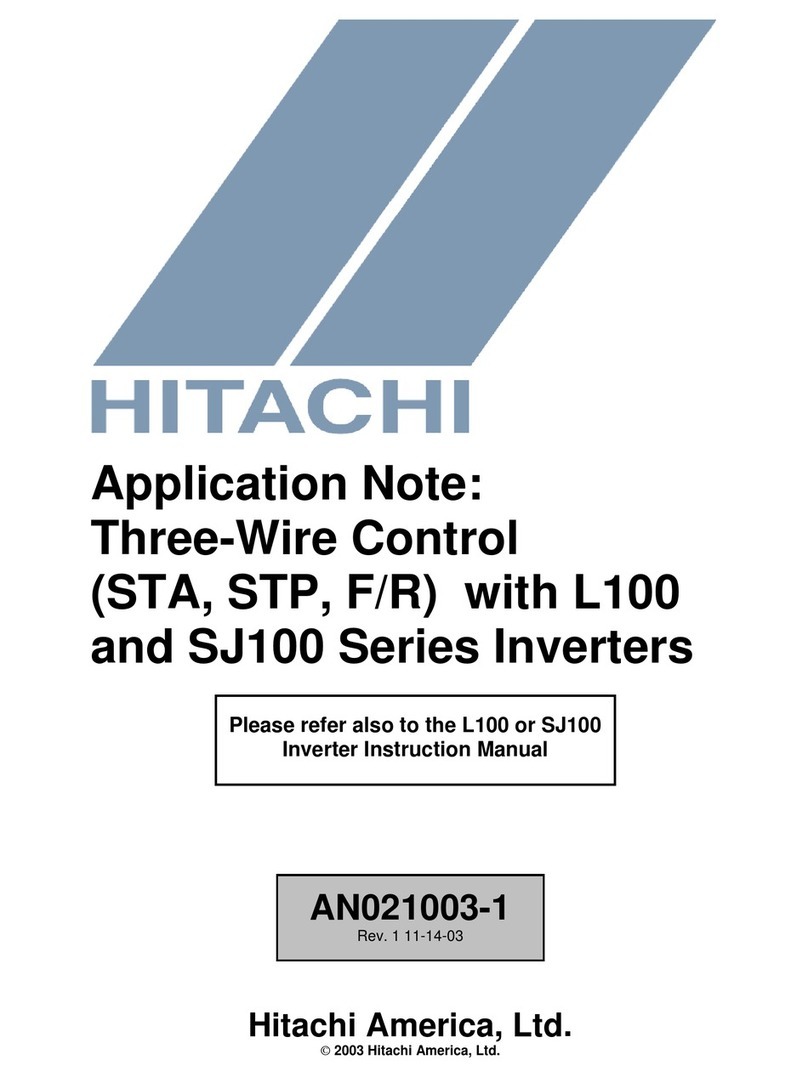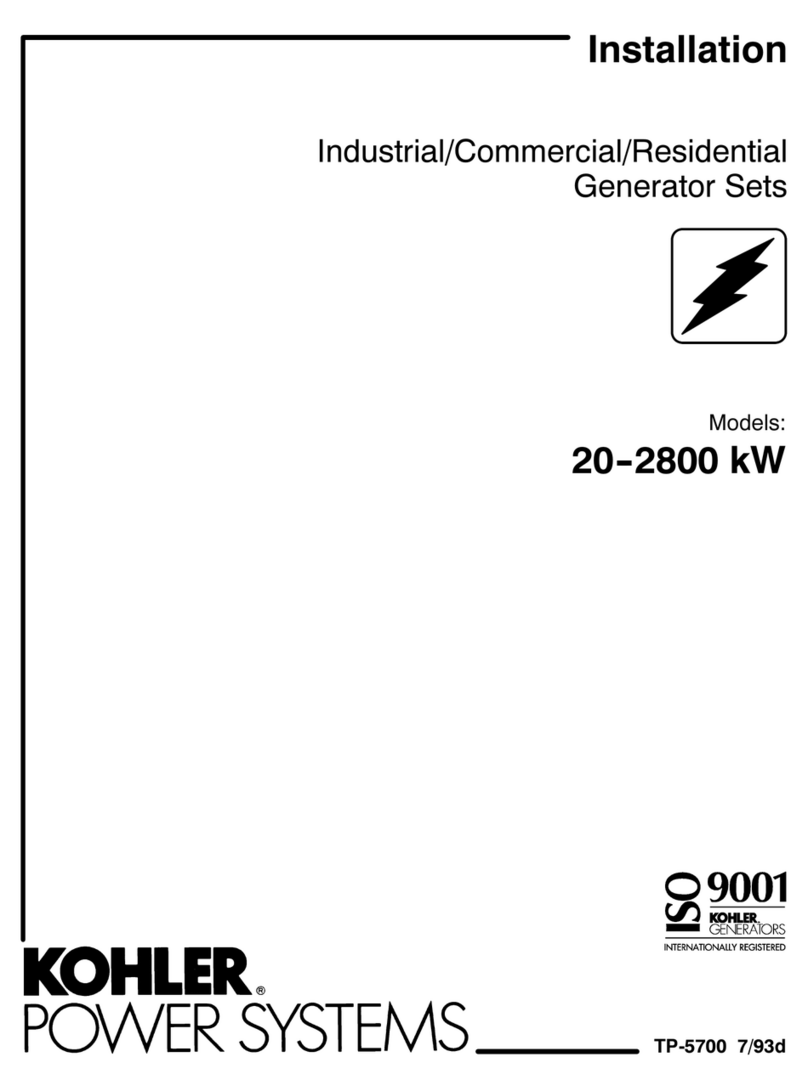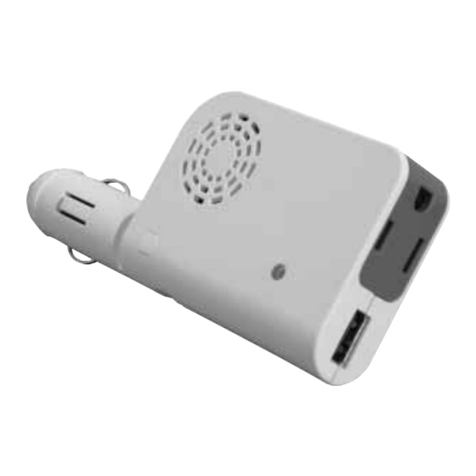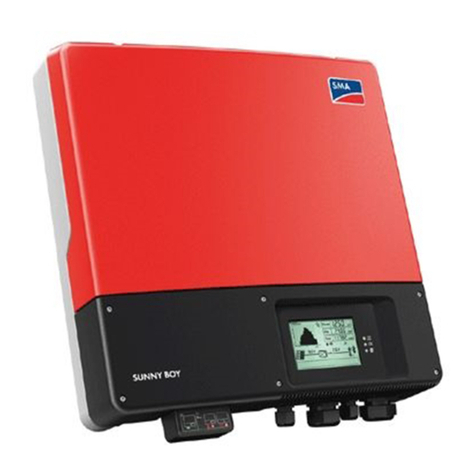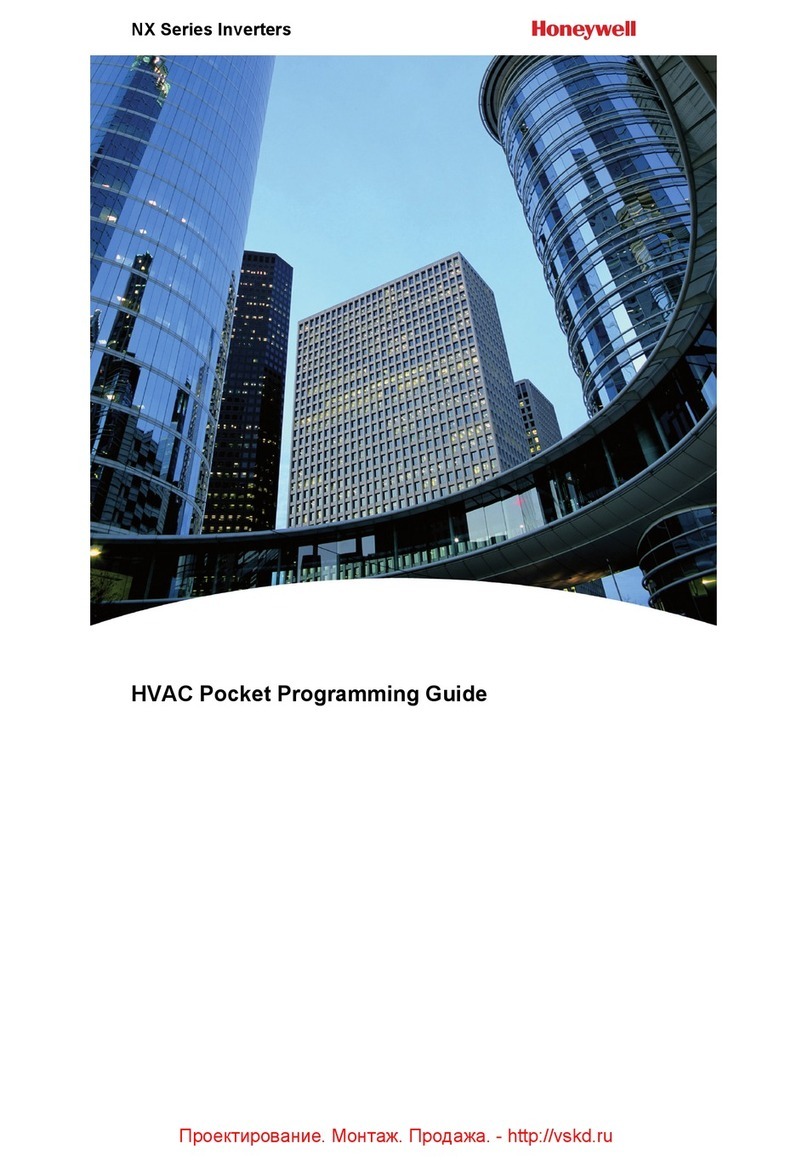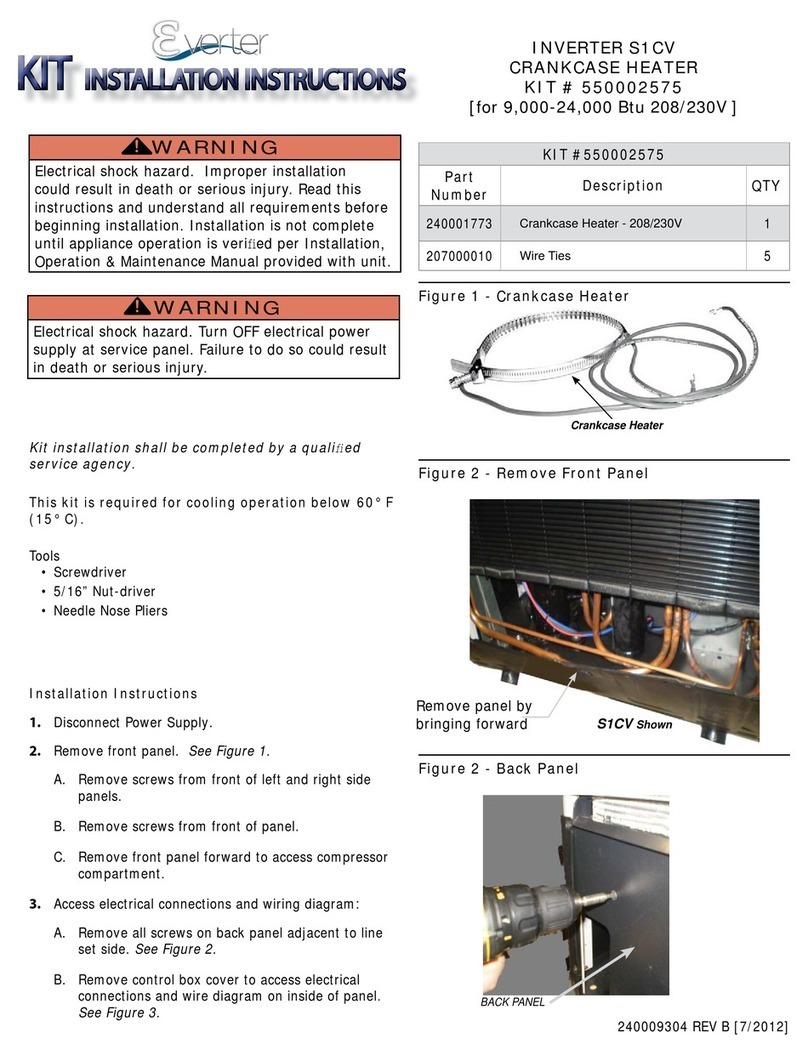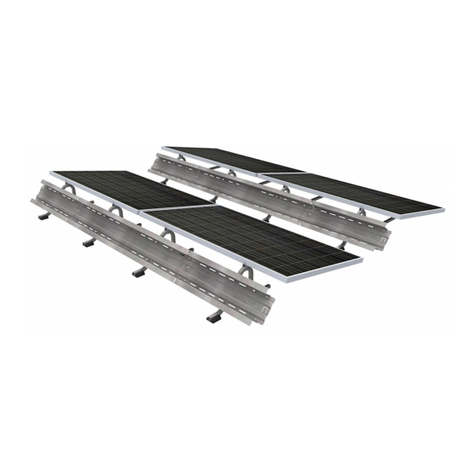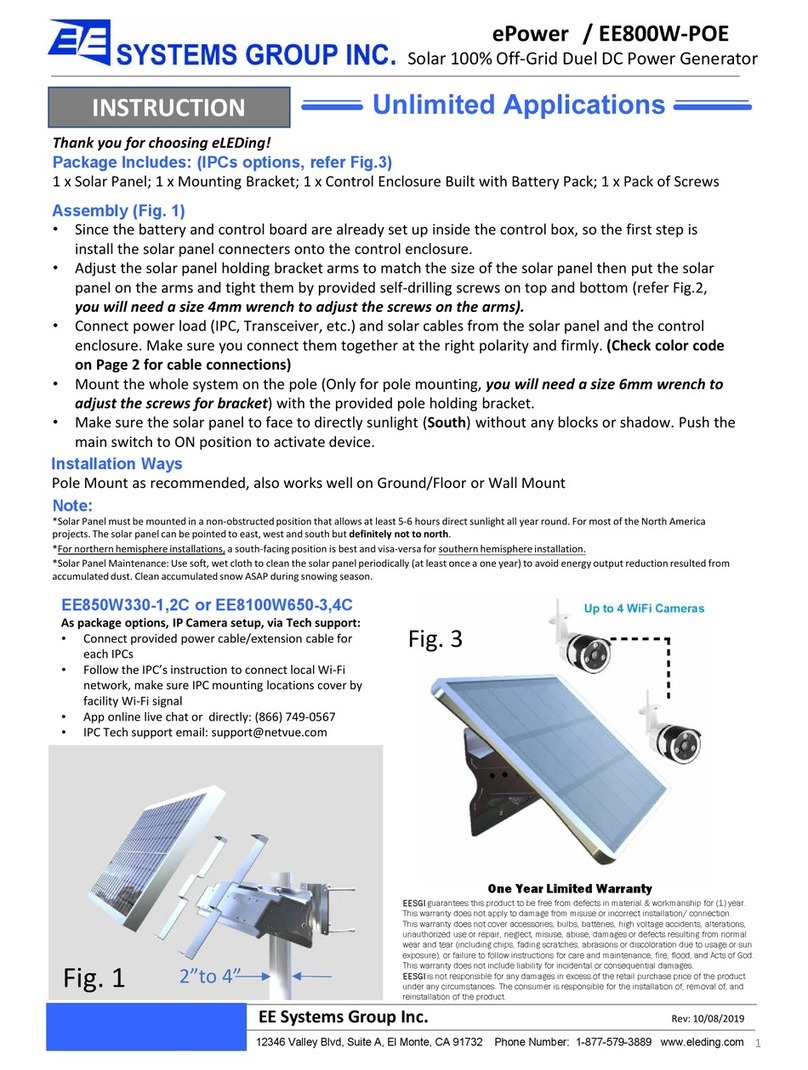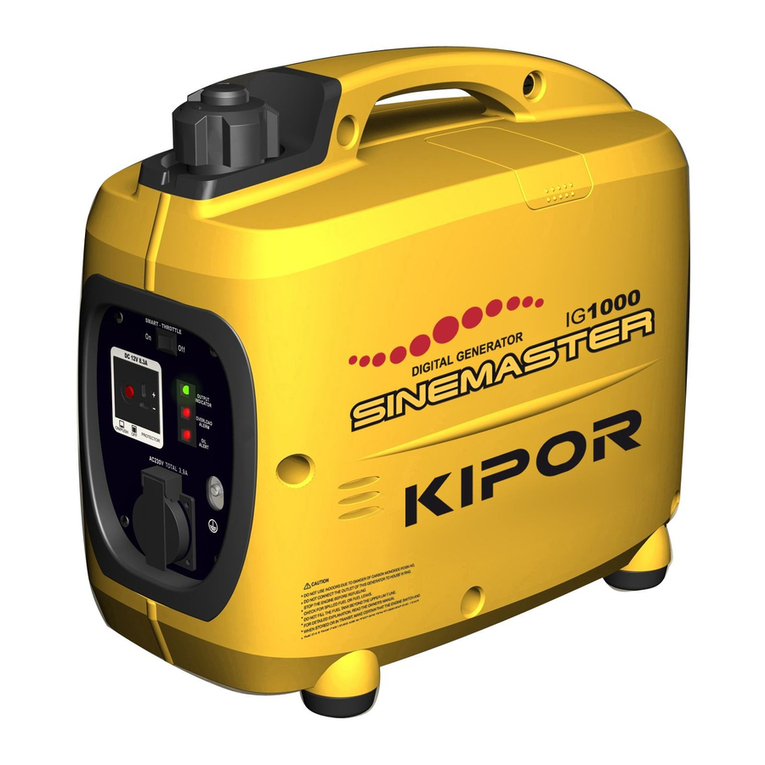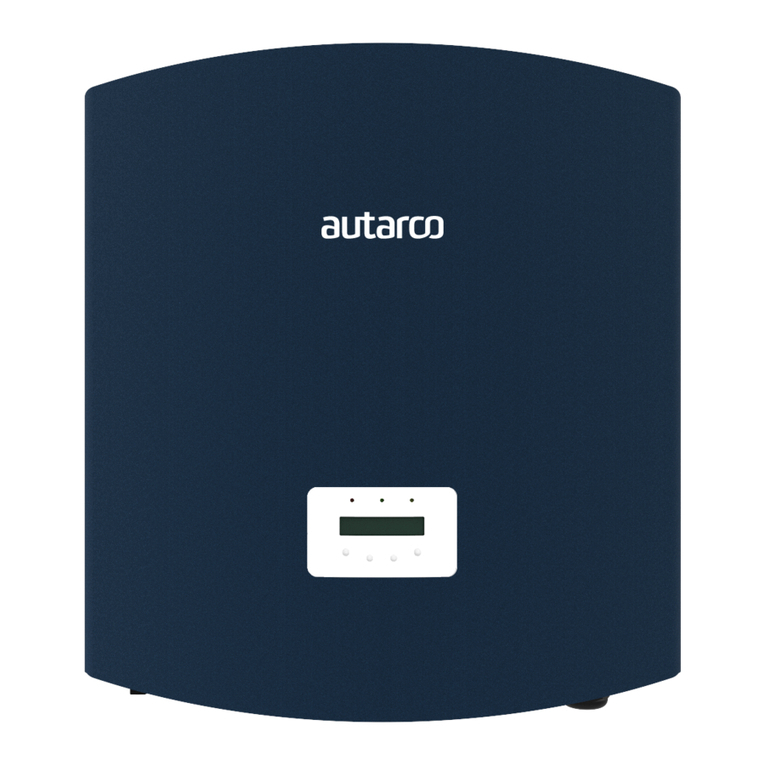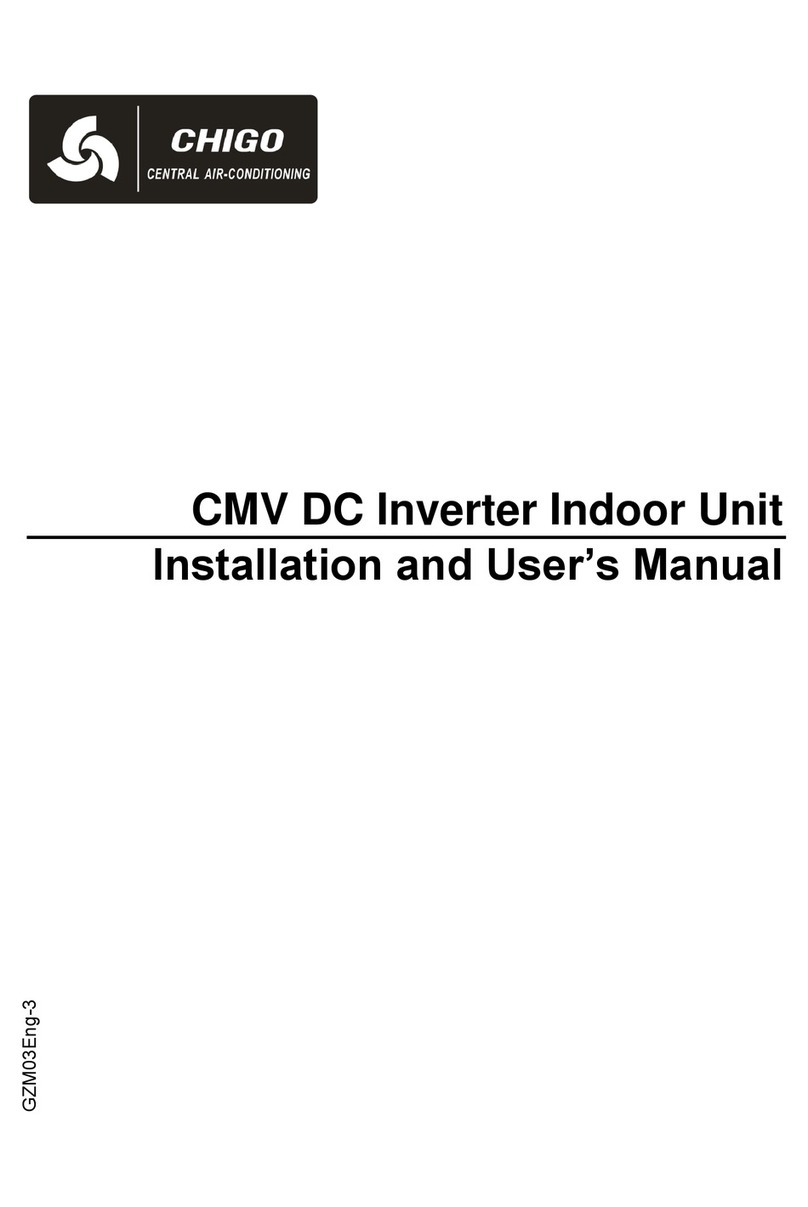Operation LED (2) AC Overload should normally remain OFF. If the inverter shuts
down due to too much AC load being drawn from it then LED (2) will come
ON. The LD550-24 will remain in this condition for 1 minute after the AC
load has been decreased to a safe level. LED (2) will flash if the inverter shuts
down due to “time to shutdown”, see page 18
Five LEDs are provided on the front panel to indicate a number of
parameters, and allow adjustment of some of these parameters.
LED (5) tells you what LED (1) – (4) is displaying as indicated on the front
panel of the LD550-24. Pressing Mode Button (7) will change the information
being displayed. •If the inverter remains in this condition after one minute, switch (12)
should be turned OFF and then back ON.
STATUS indicators LED (5) (green) flashing LED (3) DC Volts Low / High should normally remain OFF. If the inverter
shuts down because the battery volts are too high then this LED (3) will come
ON. It will remain ON until normal battery volts are restored.
When power is first applied LED (1) should flash.
When LED (5) (green) is OFF, this indicates the LED (1) – (4) is showing the
inverters STATUS, as per written notation to the right of the LEDs. In this
mode there are no adjustments to be made. •If the inverter shuts down due to not enough battery volts, then LED (3)
will flash.
•LED (3) will continue to flash until the battery volts have risen
sufficiently. In this case, charge the battery by starting the vehicle or using
a battery charger.
LED (1) Flashing indicated the LD550-24 is in Demand Start mode, this
indicates that no power is being drawn from the inverter so it has gone to
SLEEP to save power. If no power is used within 12 minutes, the LED (1)
will flash at a slower rate therefore saving more power.
The low voltage point that the inverter will cut out is adjustable to suit your
particular battery, see page 12 for details of this adjustment.
LED (1) Stays ON, the inverter has been commanded to provide power to the
load (e.g. a light switch has been turned on) so it has gone from SLEEP mode
to ON. Once the load has been removed (e.g. the light switch is turned off) the
inverter will wait 10 seconds and return to SLEEP mode.
LED (4) Temperature Overload should normally remain OFF. If the inverter
shuts down due to the heatsink getting too hot, then this LED (4) will come
ON. If the transformer is too hot then LED (4) will FLASH. The LED will
remain ON or FLASHING until the temperature has lowered to a safe level;
the inverter will then come back ON.
It is good practice to have your LD550-24 in SLEEP mode as often
as possible. When the LD550-24 is in SLEEP mode it uses 0.05
amps from the battery, when the inverter is in the ON mode it uses at
least 0.50 amps from the battery.
•If this LED (4) is coming on regularly, either reduce the amount of load
on the inverter or try to move the inverter to a cooler location.
The amount of power required to go from SLEEP to ON is adjustable and is
described on page 11.
LD550-24 Manual Selectronic Australia
7 LD550-24 Manual Selectronic Australia
8










